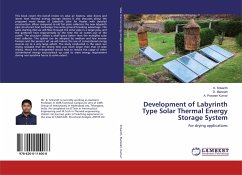Passive design responds to local climate and site conditions in order to maximise the comfort and health of building users while minimising energy use. The key to designing a passive building is to take best advantage of the local climate. Passive cooling refers to any technologies or design features adopted to reduce the temperature of buildings without the need for power consumption. Consequently, Buildings consume large amount of energy in order to achieve thermal comfort for users. To achieve the goal of thermal comfort in buildings, passive cooling is one of the suggested practices emphasized to be adopted in many buildings around the world of which educational facilities have been a major target as an opportunity of achieving thermal comfort. When it comes to educational facilities, end users who are usually students, lecturers and other occupants spend almost 50% of the entire day within the buildings. To add on 50%, occupancy is predominantly during day time when environmental conditions are adverse to human survival hence creating thermal discomfort which in turn leads to low productivity and occupancy dissatisfaction.
Bitte wählen Sie Ihr Anliegen aus.
Rechnungen
Retourenschein anfordern
Bestellstatus
Storno








